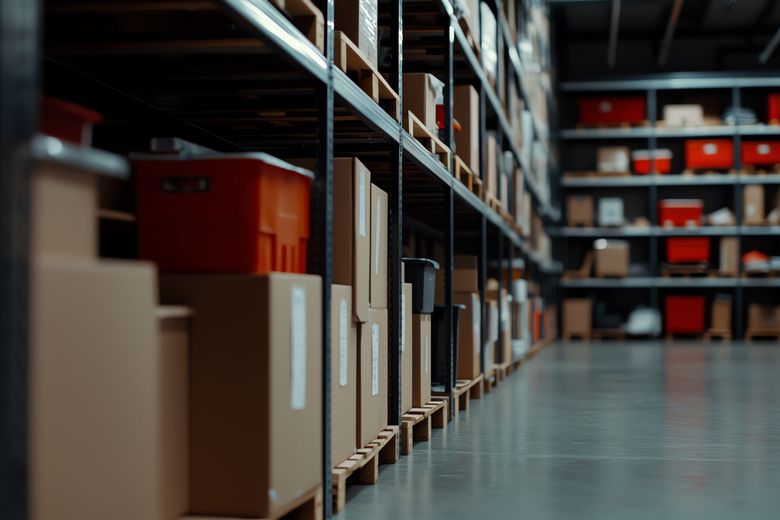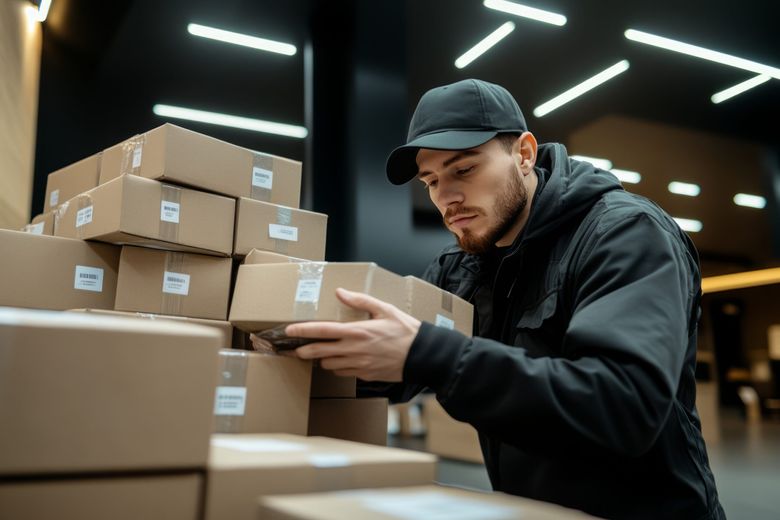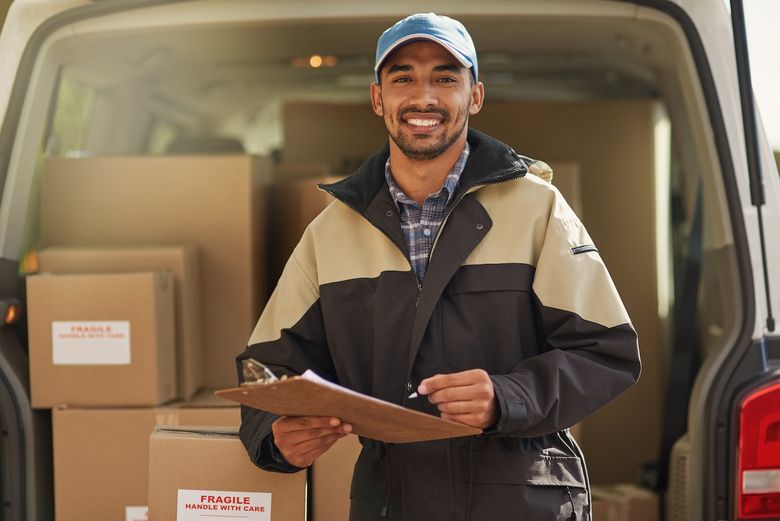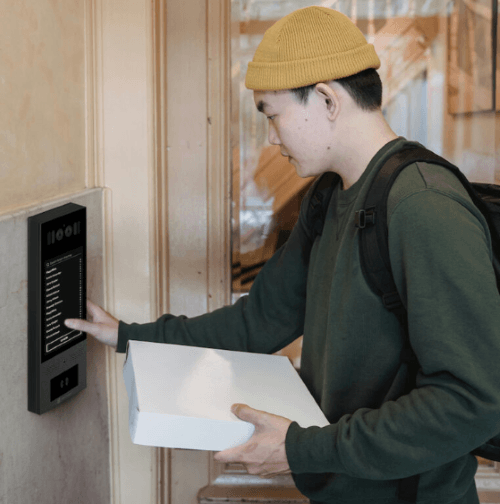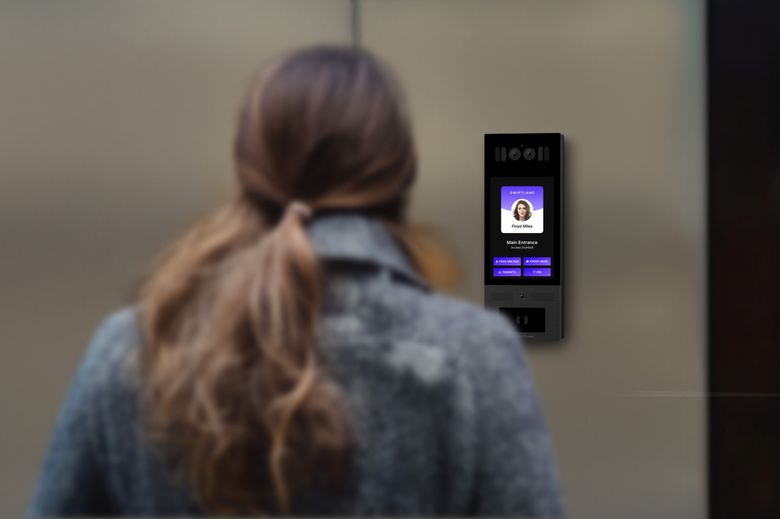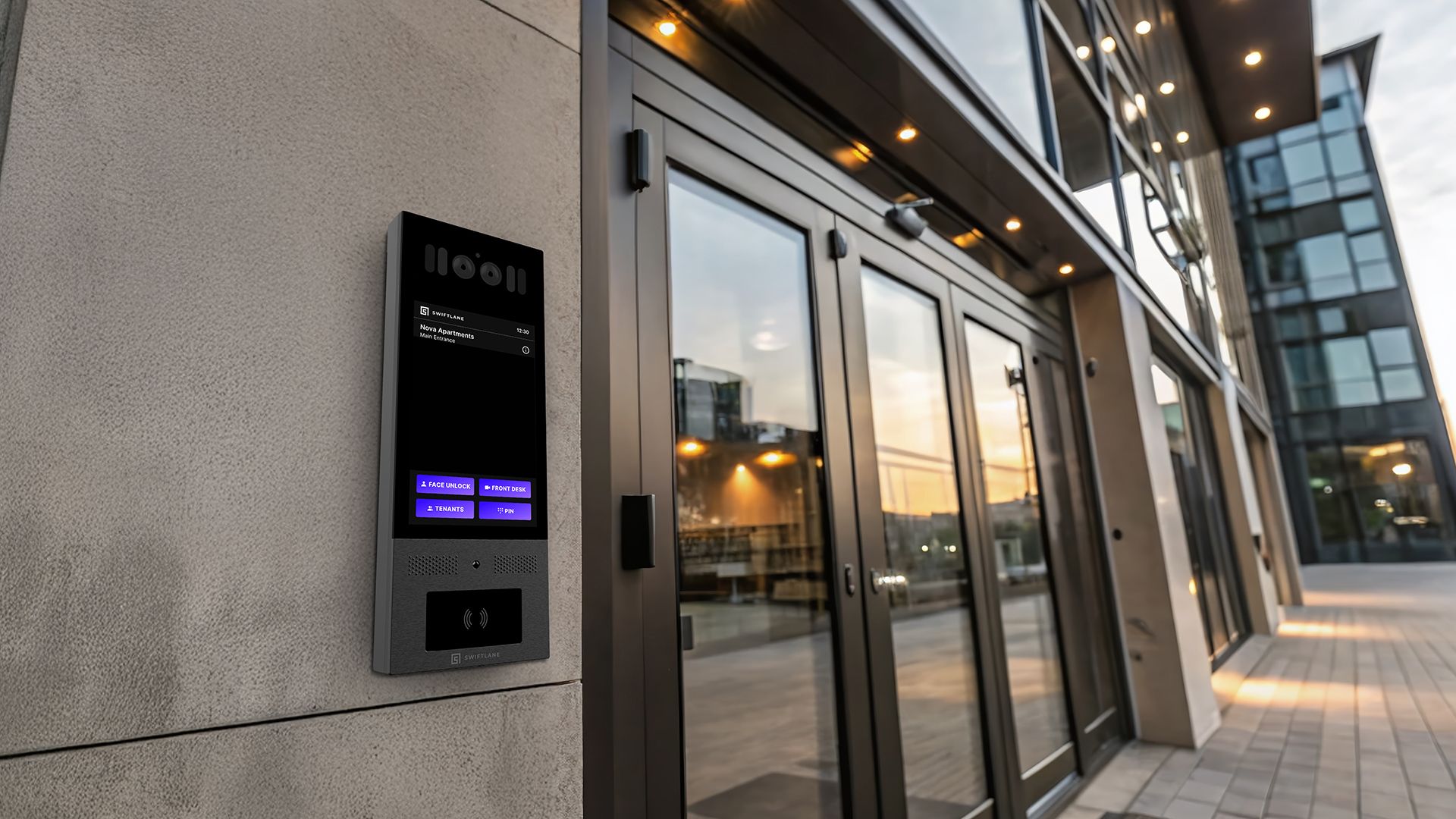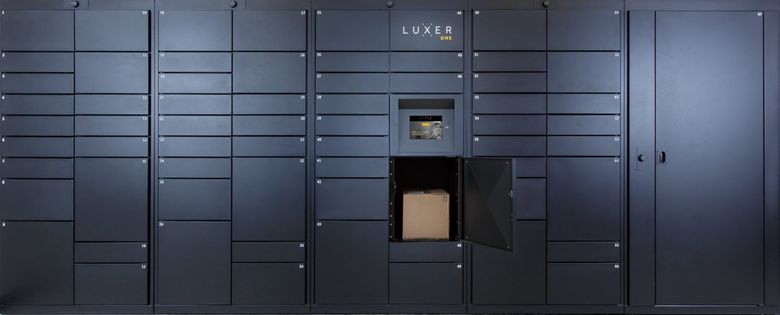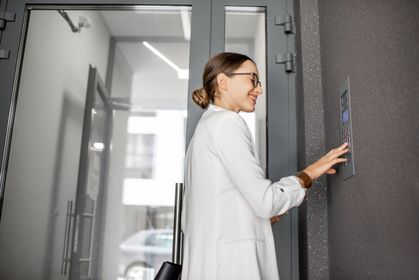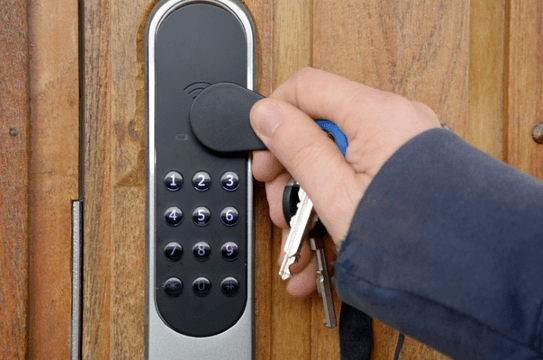Article updated on 7th April, 2025
The pandemic-cultivated culture of habitual online shopping has led to a year-on-year increase in the number of packages delivered across the U.S. According to UPS, an average of 22.4 million packages were delivered every day in 2024. However, this rise is consistent with package theft and porch pirate attacks, as reflected in the 120 million+ packages snatched across the US in 2023. And that is why you need to know how to set up a package room in 2025.
With package rooms, you can deftly manage a steady parcel inflow, create a secure delivery management system, and offer tenants a unique proposition of zero lost or stolen packages.
Key Takeaways
- Secure your building’s package management system with a package room – we explore why it’s worth the investment.
- Get tailored customer satisfaction and top-notch security from Swiftlane, Luxer One, or Hello Package.
- Avoid mistakes like inadequate security & poor organization to ensure a successful transition.
What is a Package Room?
A package room, also known as a package locker room or parcel locker room, is a secure area typically found in apartment buildings, condominiums, office complexes, and other multi-unit spaces. Its primary purpose is to provide a secure, convenient location for delivering and retrieving packages.
You might not be available to receive a delivery, and might want a secure location that’s only accessible to you, from where you can pick up packages at your own time. That’s where a package room comes in.
These rooms typically include lockers, shelves, or storage compartments where delivery personnel can place packages. Each locker or compartment can be assigned to a specific resident or tenant, and it is often accessible through a unique code or key, which ensures the security of the contents.
How Do Package Rooms Work?
The process of a package room is relatively simple.
- A delivery service reaches your building and enters a secure package room using one-time PINs, a key card, or any other access method your building may have.
- The delivery person deposits the package in a locker or shelf that’s designated for you.
- Once the package is safely placed, the package room system or building management may send automated notifications (text, email, mobile app messages) to the recipient informing them of successful delivery.
- Modern package rooms offer 24/7 cloud-based video surveillance until you collect your package.
- Once you’re ready to collect, you can enter the package room during operating hours with your credentials (key card/ passcode/ facial recognition) and take possession of your delivery.
- In some cases, as an added security measure, you must notify either the building staff or the package management system of your pick-up so that the package is accounted for.
Package Room or Package Locker: What’s Best for You?
Once you’re ready to upgrade to a more efficient package management system, you must choose between a bigger storage unit (package rooms) or individual smaller units (package lockers).
Both have advantages and pitfalls, requiring you to decide based on some key factors. Here’s a quick summary of how both options fare on key metrics.
Package Room
Advantages
- Capacity: Package rooms can accommodate larger, bulkier parcels and a higher volume of packages.
- Security: Packages are stored in a locked and monitored room, reducing the risk of theft.
- Accessibility: Residents can easily access their packages during regular operating hours.
- Space: Package rooms can be integrated into existing building spaces.
Disadvantages
- Limited Hours: Access is often restricted to specific hours, which may be inconvenient for some residents. However, you can opt for a 24/7 operational access control system for the room to retrieve deliveries whenever you want.
- Space Requirements: They may require more space within a building, which could be a limitation for smaller properties.
- Management: Package rooms may require staffing for oversight and management.
Package Locker
Advantages
- 24/7 Access: Residents can retrieve packages anytime, offering greater convenience and flexibility.
- Space Efficiency: Lockers take up less space than package rooms, making them suitable for smaller properties.
- Automation: Automated systems reduce the need for staff involvement in package management.
- Security: Individual lockers provide personalized security for each package.
Disadvantages
- Limited Size: Lockers may not accommodate larger parcels or a high package volume. Due to rising e-commerce, package lockers run the risk of overflow (when the volume of incoming packages exceeds the capacity of a storage or sorting facility). This can create bottlenecks and delays in package management.
- Installation Costs: Initial setup costs can be higher than those of traditional package rooms.
- Technical Issues: Lockers may experience technical glitches that can disrupt package delivery and retrieval. These can add to maintenance costs and overall system expenditures.
What Should Be Your Final Decision?
Historically, apartment buildings have relied on package lockers for mail delivery. However, with the surge in parcels, these lockers are proving inadequate.
As a result, many apartment buildings are now transitioning to dedicated package rooms. These rooms provide ample space and open shelving to handle the escalating influx of packages.
With modern-day access control, package rooms are becoming the preferred solution for secure delivery in apartment/ condo buildings.
Benefits Of Setting Up A Package Room
Setting up a package room in residential or commercial properties offers a multitude of benefits, enhancing both security and convenience for residents or tenants. Here are the five major benefits of setting up package rooms in apartment buildings.
Package Theft Prevention
Delivery personnel often leave packages unattended on doorsteps or hallways when recipients are unavailable. This cluttering of shared spaces is not just an eyesore; it’s a major security risk that exposes your package to anyone who passes by. Package rooms eliminate this chance of theft by providing secure storage spaces accessible to authorized personnel only.
Improved Resident Experience
You no longer need to rush home or worry about possible theft when your packages are delivered. With automation taking over, you can now receive real-time alerts on the status of your package and conveniently receive them on your time. This peace of mind contributes to a positive residential experience, and boosts satisfaction among dwellers.
Maximized Storage Space
Property managers often struggle with the logistics of storing and managing packages, especially in larger residential complexes. A dedicated package room helps maximize storage space by providing an organized area with shelves or lockers.. This ensures that common areas and individual units remain clutter-free and usable for their intended purposes.
Time and Money Savings on Package Management
Package management can be a time-consuming and costly affair for property managers or building staff. With a package room in place, the need for constant monitoring and management of individual package deliveries is reduced.
Accommodating Peak Delivery Times
Peak delivery times, such as during the holiday season or promotional events, can overwhelm building staff and residents. A package room can accommodate a large influx of deliveries efficiently, which helps track and manage packages promptly, even during busy periods.
How to Set Up a Package Room in 2025
Setting up a package room involves several costs, including converting a room into a package room, installing an access control system, shelving, a video surveillance system, and signage.
The specific costs can vary depending on factors such as the room’s size, the project’s complexity, and location. Here’s a breakdown of the various costs associated with setting up a package room.
Room Conversion
- Renovation and construction costs: This includes any necessary structural changes, flooring, lighting, and paint. Costs will vary depending on the condition of the existing room and the desired level of aesthetics.
- Electrical work: Electrical outlets, lighting fixtures, and wiring installation.
- HVAC (Heating, Ventilation, and Air Conditioning): If the package room requires climate control, you may need to install or modify HVAC systems.
Access Control System
- Hardware: Cost of card readers, keypads, dedicated intercoms, or other access control devices.
- Software: Licensing fees for software that manages access control.
- Installation labor: Cost of hiring professionals to install the access control system.
Shelving
- Shelving units: Cost of purchasing and installing shelves, racks, or storage cabinets (higher cost if they are electrically operated).
- Assembly and installation labor: If you don’t assemble and install the shelving yourself, you’ll need to budget for labor costs.
Video Surveillance System
- Cameras: The cost of security cameras and any necessary accessories.
- Video recording equipment: This includes DVRs (Digital Video Recorders) or NVRs (Network Video Recorders) to store video footage.
- Cabling: Expenses for wiring and cable installation.
- Monitoring and maintenance: Ongoing costs for monitoring and maintaining the surveillance system.
Signage
- Design and production: Costs associated with designing and creating signage for the package room.
- Installation: Labor and materials needed to install the signage.
Access Control Cards or Fobs
If you use card—or fob-based access control, you’ll need to budget to purchase these items for each resident user. To eliminate additional hardware costs, we recommend getting a biometric intercom system or one that uses a mobile app as an entry credential.
Permits and Inspections
Depending on local regulations and building codes, you may need permits for renovations and inspections to ensure compliance.
Types Of Access-Controlled Package Rooms
Today, you can choose from various access control methods for your package rooms. We’ve highlighted the common types below:
Keyed Access Package Rooms
- Traditional lock-and-key systems provide residents or authorized personnel with physical keys to access the package room.
- Requires physical management of keys and potential issues with lost or stolen keys.
Keypad or PIN Code Access Package Rooms
- Access is granted by entering a unique PIN code into a keypad or access panel.
- Offers a higher level of security than physical keys, as PINs can be easily changed if compromised.
Electronic Key Card Access Package Rooms
- Access is granted using electronic key cards or key fobs.
- Allows for easy tracking of who accesses the room and when.
Biometric Access Package Rooms
- It requires fingerprinting, retina scanning, or other biometric data for access.
- Provides a high level of security and eliminates the need for physical items like keys or cards.
Smartphone App-Based Access Package Rooms
- Residents or authorized individuals use a mobile app to gain access.
- It offers convenience as most people carry smartphones, but may require an internet connection.
Security Camera-Monitored Package Rooms
- Package rooms equipped with security cameras for monitoring and recording access.
- Adds a layer of security and accountability.
Delivery Service Integration
- Some package rooms are integrated with popular delivery services like Amazon, allowing deliveries directly into the secure area.
Top 3 Package Room Services To Consider
The abundance of package room service providers on the market can make it challenging to decide which one is most suitable for your building. To help you make an informed decision, we’ve narrowed down the top three contenders: Swiftlane, Luxer One, and Hello Package.
Each of these companies offers unique features and benefits, so let’s examine them in more detail.
Swiftlane
Swiftlane uses video intercom calling and remote unlock to ensure secure entry every time. Video intercom calls can be received from anywhere using any mobile device to visually verify who is at the door.
Swiftlane’s single-use PIN codes can be generated by tenants or property managers and distributed to delivery persons via phone, email, or text. They expire 5 minutes after initial use. Multi-use PIN codes can be scheduled to restrict access on any day or time to ensure access isn’t granted when necessary.
All visitor access can be managed under Swiftlane’s intuitive, cloud-based admin dashboard, which can be used to make changes to access remotely from anywhere.
Luxer One
Luxer One‘s package locker offers a solution for managing package rooms. Their product, Luxer Room, can transform your existing package room into a secure delivery hub.
It features an easy-to-use touchscreen interface and Luxer One’s package management software. Compatible with most pre-existing door strikes, mag locks, or electronic access control hardware, Luxer Room also includes round-the-clock video surveillance for maximum security, just like the Luxer Locker.
Hello Package
HelloPackage by Package Solutions Inc. is creating a delivery logistics solution beyond package storage. It uses custom-designed hardware, sensors, computer vision, machine learning, and AI to manage package deliveries.
Couriers use their unique code to access the package room, and then use the HelloPackage touchscreen interface to log the package. The package is placed on the HelloPackage shelving unit, where it is then weighed and its location is tracked.
Tenants are then notified that their package has been delivered. They use their unique code to access the package room and find their package. The weight sensors in the shelving then track when the package was picked up and log that it was received.
Mistakes To Avoid While Setting Up A Package Room
There are several crucial points that property managers and residents should keep in mind to ensure the efficient and secure operation of these package rooms.
Lack of Security Measures
Implement robust access control systems, such as facial recognition systems, key cards, or secure entry codes, to prevent unauthorized access to the package room. Install security cameras to monitor the room and deter potential thieves.
Insufficient Staffing
Having dedicated staff or property management personnel to oversee the package room can help maintain order, assist residents, and prevent package mishandling or theft.
Poor Organization
Develop a clear and logical organization system. Label shelves or storage units for different apartments or residents to streamline package retrieval.
Poor Channels of Communication
Establish clear communication channels with residents regarding package procedures, rules, and notifications. A prompt alert system must be in place to notify residents when packages arrive via email or mobile app.
Ignoring Package Retrieval Hours
Set specific hours for package retrieval. Residents should be encouraged to collect their packages promptly to free up space and prevent congestion.
Not Adapting to Technology
Embrace technology for package management. Consider using biometric access control systems, package tracking software, or smart lockers that allow residents to access their packages securely using their smartphones.
Neglecting Package Returns
Establish a process for package returns or unwanted deliveries. Having a designated area for returns can help manage packages that residents no longer want or need.
Let’s Wrap Up!
To conclude, package rooms have emerged as a must-have feature in today’s apartment complexes. They offer a safe and streamlined way to handle the increasing number of package deliveries.
You can select the most suitable package room solution for your building by considering available space, budget, tenant preferences, and security requirements. With service providers like Swiftlane, Luxer One, and Hello Package available, setting up a package room is straightforward.
Frequently Asked Questions
How big should a package room be?
Your package room should be at least 10’ x 15’, ideal for an average 300-unit property. This way, you’ll have a great delivery management solution, using existing space.
How does Package Concierge work?
Package Concierge lets delivery carriers deposit packages quickly into a secure locker system. Residents are then notified via email or text with a unique access code that they can use to retrieve their packages from the locker kiosk or Package Concierge app.
The access code is unique to each package, ensuring that only the intended recipient can access the package. The locker system is also designed to be secure, with multiple layers of security.
How do you set up a package room?
Establishing a package room is easy; simply choose the right location, ensure power and internet access, add shelving, and install video surveillance and signage.
With these steps, you’ll be up and running in no time.


